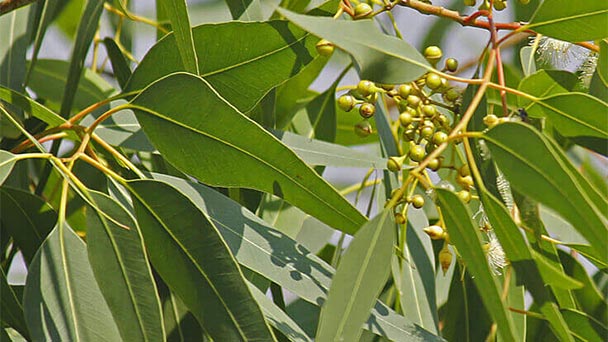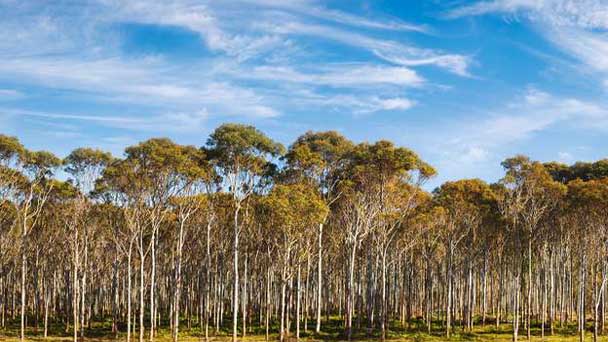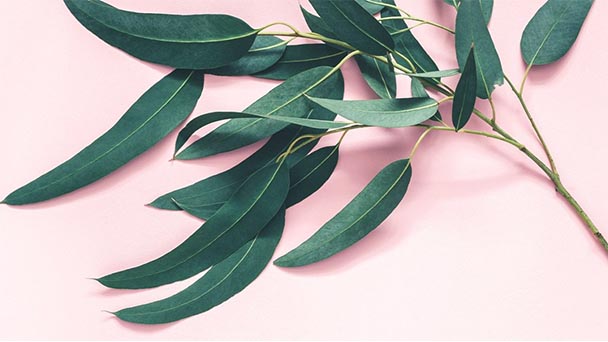Eucalyptus Profile
Written by Joy
Sep 27 2020

Eucalyptus Robusta Smith, also known as Eucalyptus, is a general name of the myrtle family and Eucalyptus genus. Evergreen tall trees, about 600 species. Evergreen plants periodically shed their dead leaves within a year. Most species are tall trees, a few are small trees, and few are shrubby. The shape of the crown has the shape of a steeple, multi-branched and hanging branches. Leaf blade is simple, entire, leathery, sometimes with a thin layer of wax. Leaves can be divided into young, middle and mature leaves. Most species have opposite, smaller, heart-shaped or broadly-lanceolate leaves.
Eucalyptus morphological characteristicsEucalyptus growth habit and growing environment and distributionEucalyptus efficacy and roleEucalyptus cultivation


Eucalyptus morphological characteristics
Dense shade trees, 20 meters high; Bark persistent, dark brown, 2 cm thick, slightly laxer, with irregular oblique fissure; The twig has an edge.Young leaves are opposite, thickly leathery, ovate, 11 cm long, 7 cm wide, stalked; Mature leaves are ovate-lanceolate, thickly leathery, unequal, 8-17 cm long, 3-7 cm wide, numerous and obvious lateral veins, with an 80 degree Angle slightly inclined to the edge, both sides have glandular spots, side veins 1-1.5 mm from the edge.
Eucalyptus growth habit and growing environment and distribution
On sunny plains, hillsides, and roadsides. Leaves can be harvested all year round. It is cultivated in the south and southwestern China. The tree trunk is tall, the root system is developed, and the transpiration effect is also big,which is known as the pump, easy to cause the soil desertification, is not conducive to the growth of other plants. Generally can grow in the annual precipitation 500 mm area, and annual precipitation more than 1000 mm growth is good.It is suitable for acid red soil, yellow soil and alluvial soil with a deep soil layer, but it also grows well in the place with a deep soil layer, loose soil and good drainage. Taproot deep, strong wind resistance. Most roots have lignans, which can store nutrients and germinate and renew. Generally, flowering and fruiting can take place 3 to 4 years after afforestation.
Eucalyptus is native mostly to mainland Australia, with a few in the neighboring islands of New Guinea, Indonesia, and the Philippines. In the 19th century, it was introduced all over the world, and by 2012, it had been cultivated in 96 countries or regions. Its main distribution centers are in Oceania, and it has a certain number of distributions in Fujian, Guangxi, Guangdong, Yunnan and Sichuan in China.
Eucalyptus efficacy and role
Eucalyptus roots can be used for food or water. Eucalyptus is also used as fuel in some places. Many eucalyptus leaves are used as fodder.Meanwhile, Eucalyptus has many varieties, such as Eucalyptus, Eucalyptus Smith, Eucalyptus globulus, Eucalyptus globulus, and other red eucalyptus species. Eucalyptus globulus and Eucalyptus straighten are the main varieties used to extract eucalyptus oil. Eucalyptus oil contains eucalyptus alcohol. It is a colorless or light yellow liquid with pungent and refreshing fragrance. It is mainly used in toothpaste, mouthwash, food and medicine, etc. Eucalyptus globulus and eucalyptus straighten are of good species. Eucalyptus oil is extracted from their branches and leaves with the best texture.
Eucalyptus cultivation
According to the saplings in the successful planting of 3 to 6 months, the growth is still weak. In order to ensure that the seedlings can have sufficient light and nutrients, pay attention to weed removal, to prevent it and seedlings compete with the growth elements, and spring is the peak season for weed growth, weeding is a must work to do. At the same time, to ensure the release of soil fertility, soil loosening should be carried out. During the operation, it should be noted that a certain distance should be kept from the root of the seedling to avoid harming the end of the root.Latest Updated
- Benefits of Bugleweed - 7 Science-backed Health Benefits
- Bugleweed Dangers & Side Effects - Is It Poisonous?
- How to Plant Evergreen Trees - What You Should Know
- When to Plant Evergreens - Grow Guide for Evergreen Trees
- 12 Wonderful Evergreen Shrubs for Your Garden
- 12 Popular Evergreen Plants with Pictures for Beginners
- When And How To Prune A Lilac Bush Like a Pro
- How to Grow & Care for Lilac Vine (Hardenbergia Violacea)
- Japanese Lilac Tree (Syringa Reticulata) Care & Propagation Guide
- Shumard Oak Pros and Cons - What to Know
Popular Articles
- Winter maintenance of Antirrhinum Majus
- How to Grow Terminalia Mantaly Tree
- How to Grow and Care for Crossostephium Chinense
- How to grow Antirrhinum Majus in spring
- Peristeria Elata (Dove Orchid) Profile: Info & Care Guide
- Underwatered Snake Plant (Sansevieria Trifasciata) - Signs And How To Fix
- How to Care for Brazilian Jasmine Plant (Mandevilla Sanderi)
- How to Grow & Care for Graptopetalum Purple Delight in Summer
- Rosa Chinensis (China Rose): Plant Growing & Care Tips
- How to Care for Baby Sun Rose (Aptenia Cordifolia)